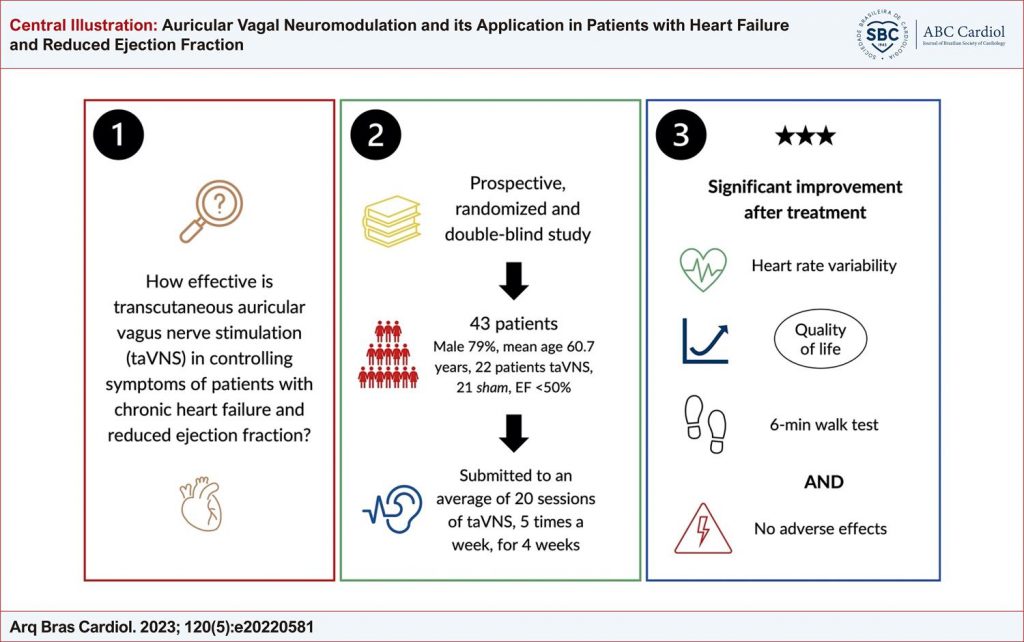Arq. Bras. Cardiol. 2023; 120(5): e20220581
Auricular Vagal Neuromodulation and its Application in Patients with Heart Failure and Reduced Ejection Fraction
This Original Article is referred by the Short Editorial "Auricular Vagus Nerve Stimulation in Heart Failure: Critical Analysis and Future Perspectives".
Abstract
Background
The autonomic nervous system (ANS) imbalance in heart failure (HF) creates a vicious cycle, excess sympathetic activity, and decreased vagal activity contributing to the worsening of HF. Low-intensity transcutaneous electrical stimulation of the auricular branch of the vagus nerve (taVNS) is well tolerated and opens new therapeutic possibilities.
Objectives
To hypothesize the applicability and benefit of taVNS in HF through intergroup comparison of echocardiography parameters, 6-minute walk test, Holter heart rate variability (SDNN and rMSSD), Minnesota quality of life questionnaire, and functional class by the New York Heart Association. In comparisons, p values <0.05 were considered significant.
Methods
Prospective, double-blind, randomized clinical study with sham methodology, unicentric. Forty-three patients were evaluated and divided into 2 groups: Group 1 received taVNS (frequencies 2/15 Hz), and Group 2 received sham. In comparisons, p values <0.05 were considered significant.
Results
In the post-intervention phase, it was observed that Group 1 had better rMSSD (31 x 21; p = 0.046) and achieved better SDNN (110 vs. 84, p = 0.033). When comparing intragroup parameters before and after the intervention, it was observed that all of them improved significantly in group 1, and there were no differences in group 2.
Conclusion
taVNS is a safe to perform and easy intervention and suggests a probable benefit in HF by improving heart rate variability, which indicates better autonomic balance. New studies with more patients are needed to answer the questions raised by this study.
1,667

